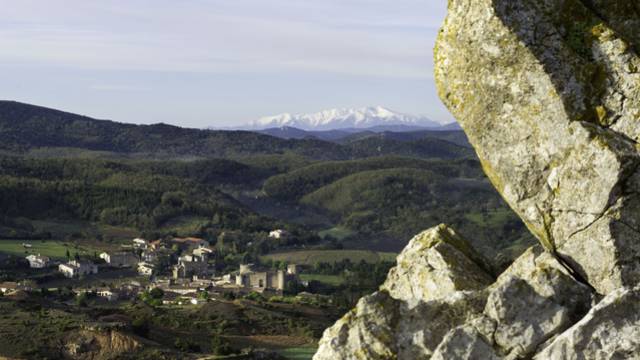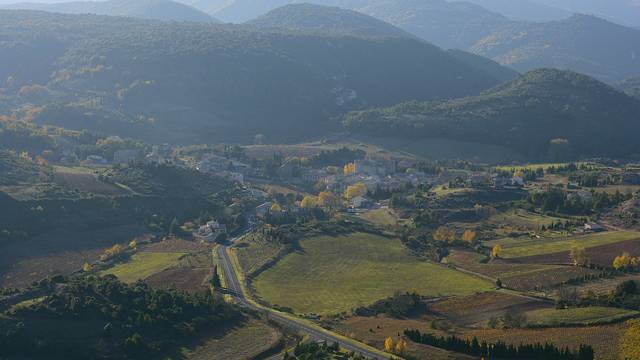History
At the end of the 11th century, Villerouge-Temenès Castle was owned by Guifred de Cerdagne, the archbishop of Narbonne. His successor was threatened by the bishop of Rodez. The latter seized an archiepiscopal seat, and ceded Villerouge to the lord of Peyrepertuse, who was himself confronted with demands from the lord of Termes. A new archbishop was declared by the papacy after two years, but it would take 33 years before the co-lords of Villerouge returned the fiefdom and the castle to the archbishop of Narbonne. During the Albigensian Crusade, Alain de Roucy, a companion to Simon de Montfort, seized the castle, which was eventually returned. In 1321, a dramatic event took place: the burning of the last Cathar, Guilhem Bélibaste, signalling an end to Occitan Catharism. Until the French Revolution, a succession of archbishops of Narbonne wielded the power of a great lord, with the ability to set taxes and serve justice.
Things to explore
As you walk

The village
The village of Villerouge-Termenès is huddled against the castle. Its narrow cobblestone roads are still guarded by a door, the Porte Saint-Jean, which recalls the Medieval outer wall. Further away, the Genty-Jordy Mansion evokes the Renaissance. Just behind the castle is a little bridge over the Lou, leading to the Church of Saint-Etienne.

The Church of Saint Etienne
The Church of Saint Etienne was built in the 13th century. It is likely that a Roman, or even pre-Roman, church stood there, alongside the original village. The paths from that ancient time are still there, under our feet.

The altarpiece in Saint Etienne
The church contains a 16th-century altarpiece It recounts, over 8 wooden panels, the legend of Saint Etienne, the first Christian martyr, overlooked by a 'great sky' of four prophet busts. This work was restored to its original splendour in 2004.
About

Petite Vadrouille
The Sentier de la Petite Vadrouille crosses the ochre and red lands after which the village of 'Villerouge-Termenés' is named. The land is made of red marl rock (i.e. clay), comparable to the rock around Espéreza. They date from the end of the Tertiary Cretaceous period - 65.5 million years ago. This hiking trail is also the chance to enjoy spectacular views over the Termenès, Corbières, Narbonnais and Pyrenees.

Termenés wine
As the crow flies, Villerouge-Termenès is 6km from Termes. In the Corbières wine area, its vineyards are part of the Termenès area, the highest vineyard in the Corbières. The estate is in a Mediterranean climate, which has both mountainous and oceanic influences. You are welcome to try Corbières appellation wines at one of the many estates and wine-tasting cellars. Taste the wine on site, and take it home with you to recreate the flavours of your holiday.

Corbières has a significant mineral wealth, mostly comprising of iron and silver. Iron mines have existed here since Antiquity, with elaborate operations created by the Romans. Mining was also a major cause of the power of Lagrasse Abbey and the lords of Termes in the Middle Ages. In the 17th century, Colbert relaunched its mining industry, which grew enormously over the following centuries. One of the biggest mining sites is around Palairac, a small village around 15km from Villerouge-Termenès. The 19th-century engineers listed approximately 300 mines. The ore was soon no longer purified on site, but transported to places rich in water and machines, such as the Quillan forge. In the 20th century, iron ore was transported from Palairac via a 5km cable where buckets were hoisted up to the rail station of Félines-Termenès. Mining activity ceased in the 1960s.





















